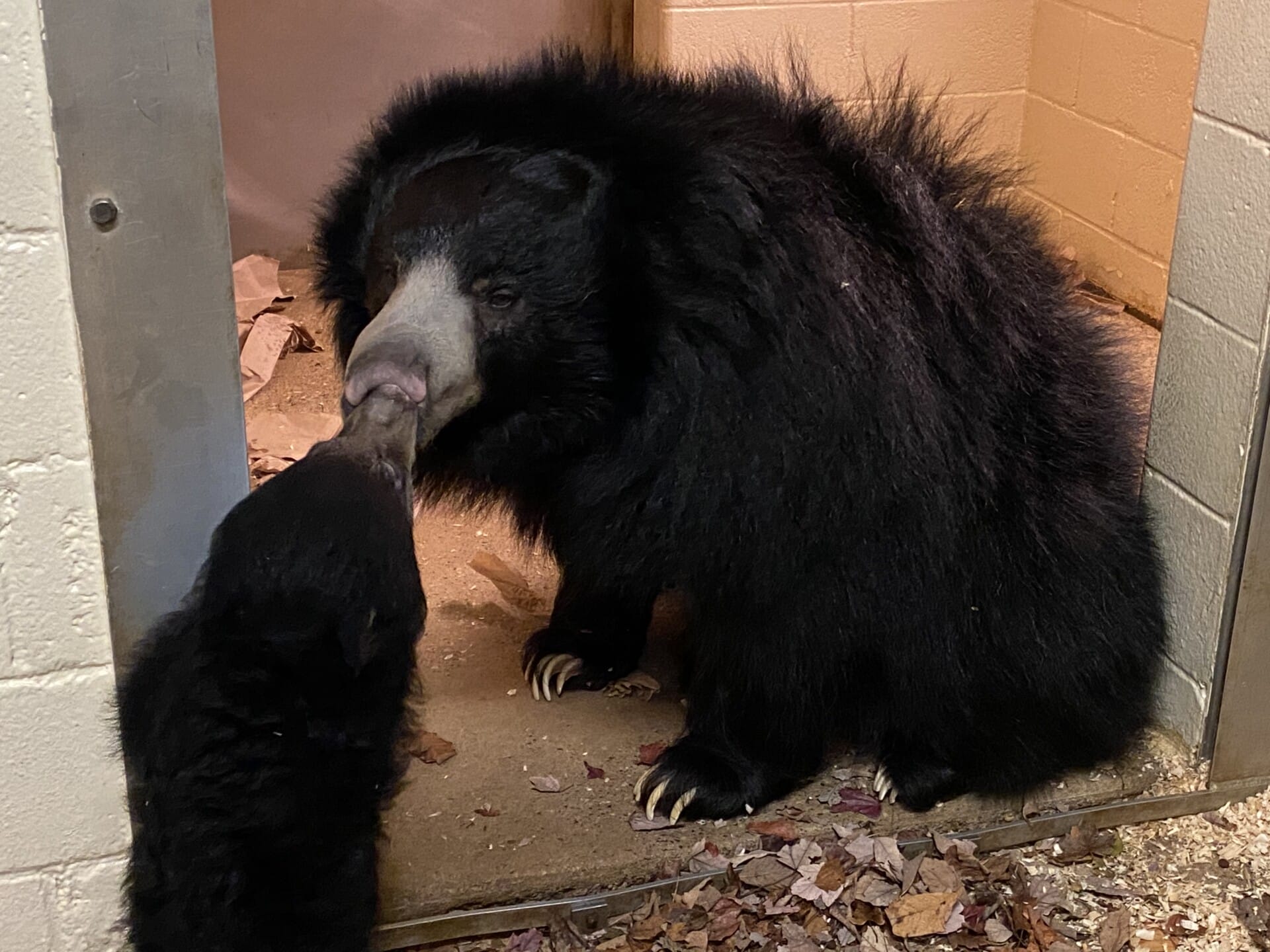
Kmari came of reproductive age the fall of 2013. Kramer has successfully sired two litters of cubs.
#Sloth bear full
The 2014 season will be their first full breeding season together as a pair. Since 1957, San Diego Zoo Wildlife Alliance has bred 25 sloth bears of two subspecies, the Indian sloth bear and the Sri Lankan sloth bear. The cubs weigh approximately 12 ounces and are born with their eyes closed.Ĭreation Kingdom Zoos Sloth Bears are Kramer and Kmari. The sloth bear is in grave danger of extinction throughout most of its range. Breeding season is between late June and early August after which 1-2 cubs are born. There may still be bears in the wet forests of. Brown and gray hairs may be mixed in with the dark coat, and cinnamon and reddish individuals have also been reported. Sloth bear Sloth bears are found in Sri Lanka, India, Bhutan and Nepal, predominantly in lowland areas. The babies also ride on their mothers backs for 2 years. The sloth bear is small and usually black, with a long shaggy coat, especially over the shoulders. Sloth bears also feed on honey, enduring the stings of bees to obtain honeycombs, as well as eggs, carrion, vegetation and fruits when in season. The lack of upper incisors creates a channel through which the bear sucks insects, and they are able to voluntarily close their nostrils, which prevents the inhalation of dust. The Sloth bear is a myrmecophagous bear species native to the Indian subcontinent. Breaking open a termite mound with its strong front claws, the sloth bear will then insert its snout and blow away earth and dust before sucking the termites into their mouth.

Unique among bear species, the majority of their diet is composed of insects, particularly termites and ants. The large population of sloth bears at Wildlife SOS will contribute to an unprecedented dataset that includes weights and measurements, growth rates, and claw and hair growth as indicators of dietary health, and other life history variables.Sloth Bears are one of the most endangered bears on the planet with only 46 captive individuals in the Western Hemisphere. Our reproductive studies are centered on estrous cycle hormone profiling, seasonality, physiology of ovulation, and identification of pseudo pregnancy. A SLOTH bear mauled a couple to death before devouring their bodies in a horror forest killing. Our behavioral work focuses on studies of well-being and temperament, social and reproductive behavior, and chemical and acoustic communication. In the state of Odisha, 87 sloth bear deaths were recorded between 20. Our work will provide critical new information about the behavior and physiology of the sloth bear to better manage populations in zoos, rehabilitation facilities, and in the wild. Villagers have stoned, electrocuted, and poisoned sloth bears that come near settlements. The presence and protection of these animals offers an unprecedented opportunity to study the little-known sloth bear. Wildlife SOS has rescued nearly 400 bears from the “dancing bear” trade in India, all of which now reside in four rescue and rehabilitation centers. Reproductive Sciences and Recovery Ecology researchers at SDZWA have embarked on a long-term collaboration with Wildlife SOS, a non-profit organization working to protect and conserve the natural resources of India. It is possible that the bears arboreal habits and their long claws led to their original misclassification as sloths. They have large lips, a long tongue, a pale muzzle and well-developed hook-like claws that enable them to climb trees and dig for termites. Most bears are opportunistic omnivores their diets consist of fruits, other vegetative material, and in lesser amounts, mammals, fishes, and insects.

Understanding basic physiology and behavior of sloth bears is fundamental to conserving it, and involves creatively combining laboratory science with field techniques. Sloth bears are stocky with long, shaggy, black hair and a white U- or Y-shaped marking on the chest. Together with our partners, we support conservation efforts by exchanging animals with other breeding institutions to maintain genetic diversity in the North American population.


The sloth bear is in grave danger of extinction throughout most of its range. Unlike other bear species of the world they mainly feed on fruits. Threats to Survival: Habitat loss poaching and trade in body parts systematic persecution as a pest The sloth bear (Melursus ursinus) is a bear species native to the Indian subcontinent. Conservation Status: IUCN Red List - Vulnerable


 0 kommentar(er)
0 kommentar(er)
